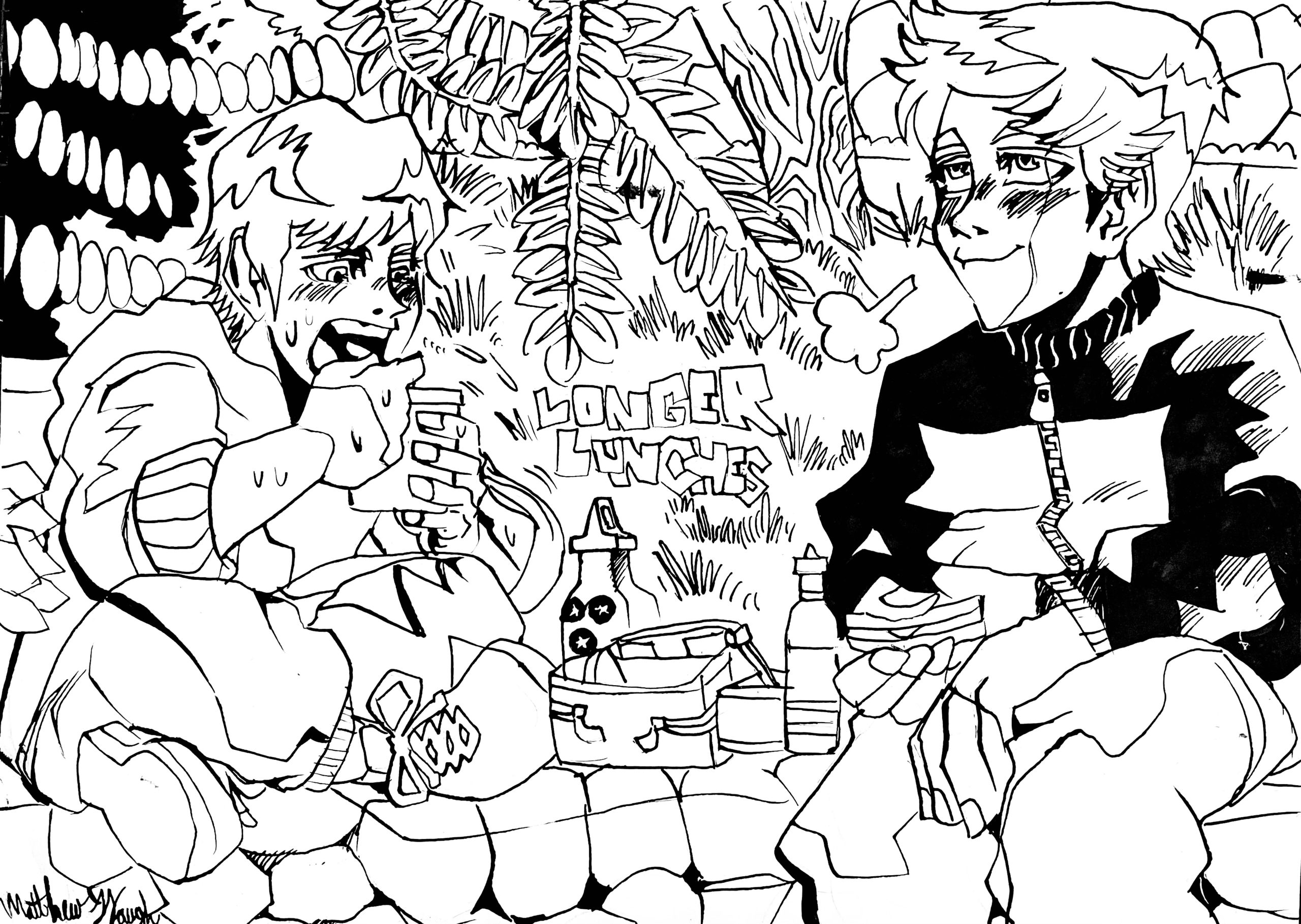Original art by Matthew Waugh.
Everybody loves lunchtime. When the bell rings midday, it’s a break from our classes, a rest for our brains, a time to de-stress and hang out with friends during school hours. But the purpose of the lunch break is to give students time to eat and maintain healthy eating habits by eating at the right time.
At Washington, we have the liberty of having an open campus lunch and we are allowed to leave the campus to get food. However, with the time given to us, many of us won’t be able to capitalize on the opportunity offered to students.
For lunch, we get 36 minutes from 12:58 to 1:34. Based on where your 4th period is, whether you want to go by yourself or not is something to take into account. Your willingness to run or jaywalk is another. With the time we are given, it’s hard to get food. If you plan on going to the main food areas surrounding our school that are walking distance, note almost all of them are off Washington Ave.
If you plan on going to this area, places like Fortune Cookie and Dominos both get so packed that if you don’t order ahead of time, or have someone order for you, or aren’t one of the first to get there, just head back to campus and save your time. Students who stay to get their food have to eat quickly, while rushing back to school to have enough time to finish. Even worse, sometimes the student orders and pays, but has to leave the food to get back to campus in time.
And if a student does make it back to school after rushing back, due to COVID-19 protocols in schools, teachers can’t let you finish your food the next period.
Unless you drive or know someone who drives, you have to move quickly if you want to go to some of these places.
If we had more time, then we could get food or get back to school with enough time to eat.
Longer lunches open the opportunity for club activities as well. Club meetings are already held at lunch, but if you have extra time new kinds of club activities would be able to run during lunch.
Furthermore, for people who already have other after school activities or are taking care of family, longer lunches could even supply more time to do homework in school, as opposed to doing it at home, which gives a student more time to relax at home.
Oftentimes, homework piles up on students, especially when you have other responsibilities at home. And the stress of being backed up could be suffocating.
More time at lunch reduces the stress of being backed up by offering more time to do or makeup work. This would be good for the students’ performance in the classroom, but more importantly their mental health.
Giving students rest at home is crucial, when someone is overworked and burned out, they won’t perform well socially or scholastically. Clearing up time at home by offering more time to work in school would give students more rest at home.
The main argument against longer lunches is that to make up the time for the extra minutes, time in classes would need to be extended.
California law forbids schools from starting any earlier than our already scheduled time at 8:30, so the idea of pushing back the school starting time is not in the picture. But, there are alternative options.
One is to lengthen the school day. Say the school releases students at 3:45 and adds 15 minutes to lunch. The extra 15 minutes would make a huge difference, and gives people enough time to eat. Or, for a more extreme measure, you could take minutes from the classes. A normal class period lasts 52 minutes. If we take 2 minutes from each class total that would add 12 minutes to our lunch period. That would extend the lunch period to 48 minutes which at least gives students enough time to get back to campus, and still gives teachers enough time to give their lessons.
This would also eliminate the awkward “ending” buffer period that some classes experience where the teacher is done instructing, and 2-3 minutes at the end of the class are wasted when students pack up and talk, or sit in silence starting at the clock.
The current situation is a problem. If we are given more time, opportunities will be opened for people to get food, eat, and socialize, while benefiting from other scholastic activities.
Dylan Mabunga is a sophomore at Washington High School. He was born in San Jose, California, and moved to Fremont when he was two. This is his first year with the Hatchet. Topics he is interested in include world events, sports, and movies and video games. Dylan enjoys playing basketball, video games, and hanging out with friends. Dylan is unsure of what he wants to do in the future, but currently is planning on going to college and is unsure what to major in.

